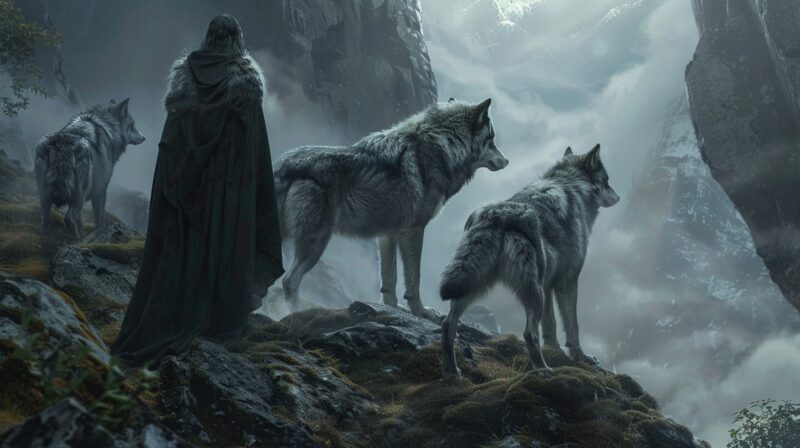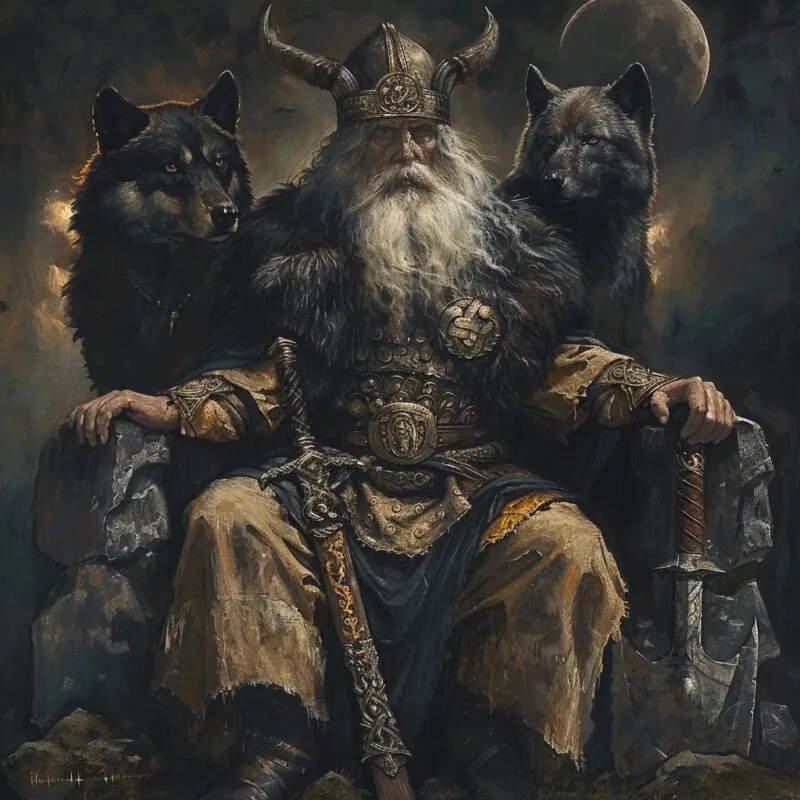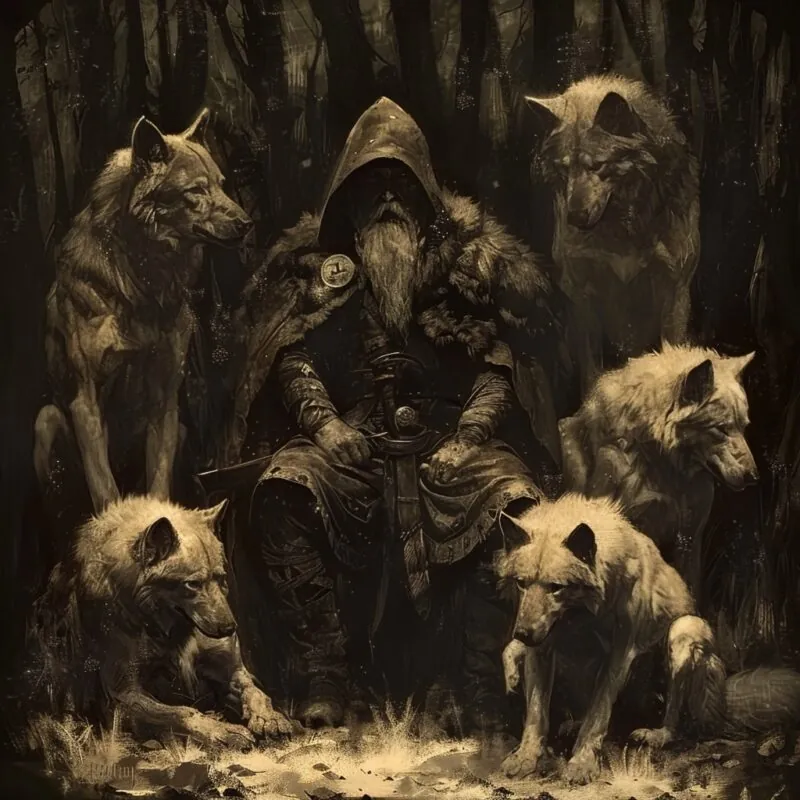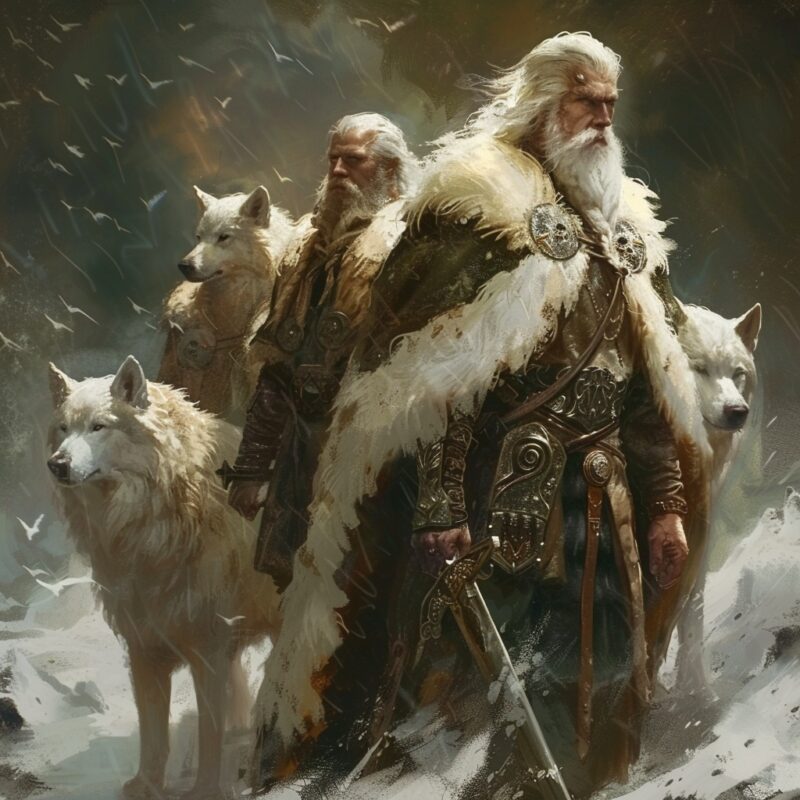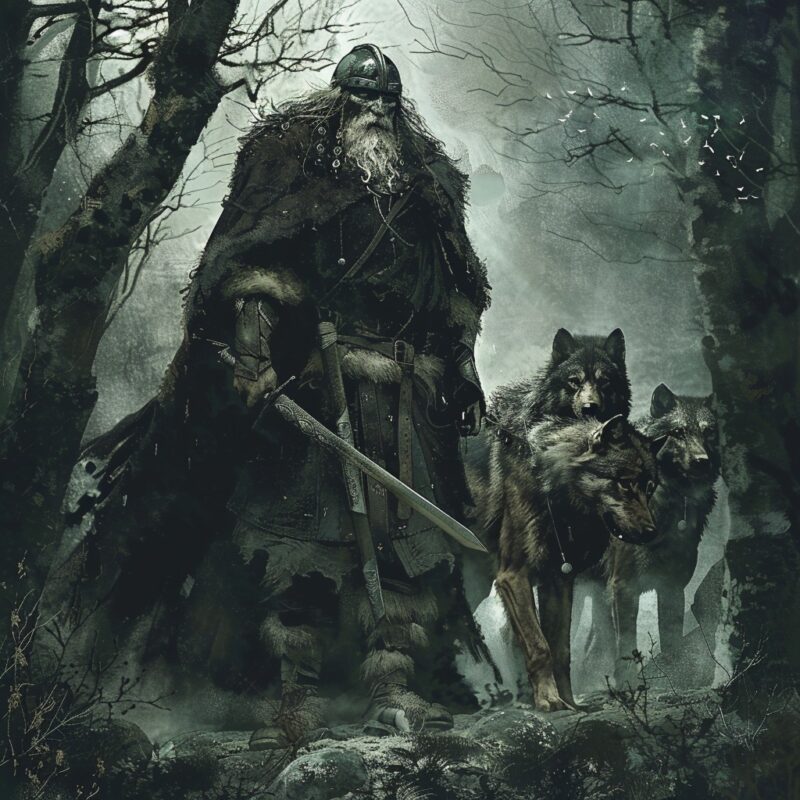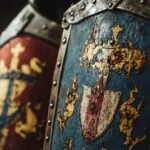Odin’s Loyal Wolves, Geri and Freki, hold a special place among the many companions of Odin, the respected leader and head of the Norse gods. Known for his wisdom, magic, and connection to the cosmos, Odin’s bond with these two wolves offers valuable insights into Norse mythology and the values of the Viking Age.
Geri and Freki are more than just pets; they symbolize strength and loyalty. By understanding Odin’s Loyal Wolves, we can appreciate the rich and complex tapestry of stories and beliefs that shaped the Norse worldview.
Names and Meanings
In Norse mythology, Odin had two loyal wolf companions named Geri and Freki. Their names tell us a lot about their personalities. Geri means “the ravenous one” or “the greedy one.” This suggests that Geri was an extremely hungry wolf who could never get enough to eat. Freki’s name means “the gluttonous one” or “the greedy one.” Freki was also a wolf with a huge appetite, and nothing ever satisfied her.
These names help us picture how fierce and powerful Odin’s wolf companions must have been. They had such big, insatiable appetites that their names reflected this trait. In Norse myths, the names of characters often reveal important details about them. Geri and Freki’s names show that they were massive, ravenous wolves who loyally served the mighty god Odin.
The Loyalty
In Norse mythology, Geri and Freki are depicted as Odin’s constant, loyal companions. They accompany the god wherever he goes, symbolizing the warrior spirit in Viking culture. Odin is often shown feeding the wolves from his own table, representing their deep bond.
This act goes beyond just providing sustenance – it signifies the trust and mutual reliance between Odin and his wolves, essential qualities in the harsh world of the Norse gods.
Do you know that some Vikings even believed they were descended from wolves?!
Symbolism of Wolves in Norse Mythology
Wolves hold a complex place in Norse mythology. They are seen both as noble creatures and as fearsome predators. The association of Odin with wolves like Geri and Freki highlights the dual nature of wolves in Norse culture.
Wolves symbolize both noble companionship and fearsome predation in Norse culture. Geri and Freki embody these dual characteristics, reflecting the unpredictable nature of life – John Lindow.
On one hand, they are seen as loyal and protective companions, embodying the warrior ethos of the Vikings. Geri and Freki’s ferocity and wildness also inspire fear, reflecting the unpredictable and often dangerous aspects of life.
Wolves in Viking Culture
Vikings really respected wolves. They admired how strong and skilled wolves were at hunting, and how they lived in tight-knit packs. The Vikings saw a lot of similarities between themselves and wolves. Like wolves, Vikings saw themselves as fierce warriors who had a strong sense of community and loyalty to their group. This sense of brotherhood was super important for Vikings to survive in battle and on long voyages.
Did you know that the Viking word for wolf is a vargr (anglicised as warg), especially for the wolf Fenrir that destroyed the god Odin in the battle of Ragnarök, and the wolves Sköll and Hati, Fenrir’s children, who perpetually chase the Sun and Moon? In Old English, a wearh is an outcast who may be strangled to death.
The fact that the gods like Odin had wolves as companions, like Geri and Freki, shows how much wolves meant to Viking culture. Wolves weren’t just regular animals to the Vikings – they represented all the qualities the Vikings most valued, like strength, hunting skill, and loyalty to the pack.
Geri and Freki in Historical Texts
We can find references to Odin’s wolves Geri and Freki in some really important historical texts about Norse mythology, like the Poetic Edda and the Prose Edda. These texts are primary sources that give us a direct window into the stories and beliefs of the Norse people.
In these ancient writings, Geri and Freki are mentioned along with other gods and mythical creatures from Norse mythology. Geri and Freki were important figures in the Norse pantheon of gods and legends, as shown by their frequent depiction in various art forms.
Do you know that the original name of Fenrir is Fenrir (Old Norse ‘fen-dweller’) or Fenrisúlfr (Old Norse “Fenrir’s wolf”, often translated “Fenris-wolf”), also referred to as Hróðvitnir (Old Norse “fame-wolf”) and Vánagandr (Old Norse ‘monster of the [River] Ván’), is a monstrous wolf in Norse mythology?
The fact that Geri and Freki appear consistently across multiple historical texts helps solidify their significance in Norse myths. If they are described in different sources, it confirms their central role in the stories and beliefs of the Norse people. Their repeated appearances in these primary sources underline just how crucial Odin’s wolf companions were in Norse mythology.
Artistic Depictions of Odin’s Wolves
Artists have depicted Geri and Freki, Odin’s loyal wolf companions, in various art forms throughout history. From ancient carvings and runestones to modern illustrations, artists have captured the fierce and devoted nature of these mythical creatures. Many artistic works emphasize the close bond between Odin and his wolves, such as showing them sitting by the god’s side during feasts.
These depictions underscore the honor and significance Geri and Freki held in Norse mythology. These artistic representations help keep the stories and legends of Odin’s wolves alive, allowing new generations to appreciate and understand these iconic figures from Norse myths. Art serves as a bridge, connecting the ancient mythology to contemporary audiences.
The Legacy of Odin’s Loyal Wolves
The legacy of Geri and Freki, Odin’s loyal wolf companions, extends far beyond just Norse mythology. These wolves have become enduring symbols of loyalty, strength, and the warrior spirit. People frequently reference Geri and Freki in popular culture, literature, and even the names of sports teams and organizations in modern times.
This long-lasting legacy underscores the continued impact of Norse mythology on contemporary culture. Odin’s wolves continue to inspire and captivate people, reminding us of the rich heritage of the Viking Age.
People admire traits like courage and resilience today, and they use their stories and images to evoke these qualities. The lasting legacy of Geri and Freki highlights how these mythical figures have transcended their origins to become powerful symbols that resonate with people in the present day.
Conclusion
Geri and Freki, Odin’s loyal wolf companions, transcend their mythological origins to embody the core values of Viking culture. It is loyalty, strength, and the warrior spirit. Their presence in Norse mythology reflects the complex relationship between humans and the natural world, capturing the duality of wolves as both noble allies and fearsome predators.
The enduring legacy of these mythical wolves in art, literature, and popular culture underscores their enduring significance. Geri and Freki’s stories continue to resonate, offering insight into the rich tapestry of Norse mythology and the values it imparts.
In the tales of Odin’s wolves, we gain a deeper appreciation for how mythology can provide a window into the past. These figures have become powerful symbols that shape our understanding of history and its ongoing influence on the present day. Geri and Freki’s legacy extends far beyond their roots in Viking lore.
They stand as reminders of the complex relationship between humans and nature, as well as the timeless qualities of loyalty, strength, and the warrior spirit that continue to inspire people across generations. Their stories persist as a source of fascination and inspiration.

